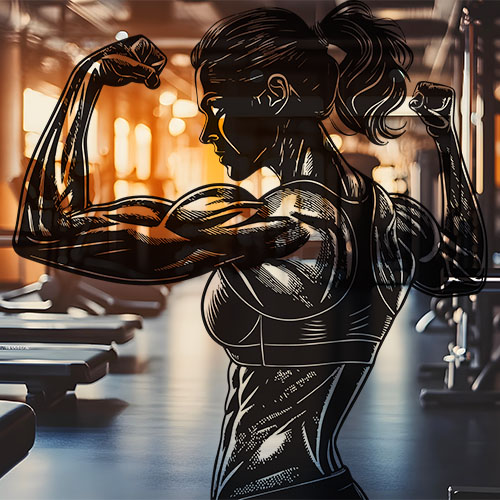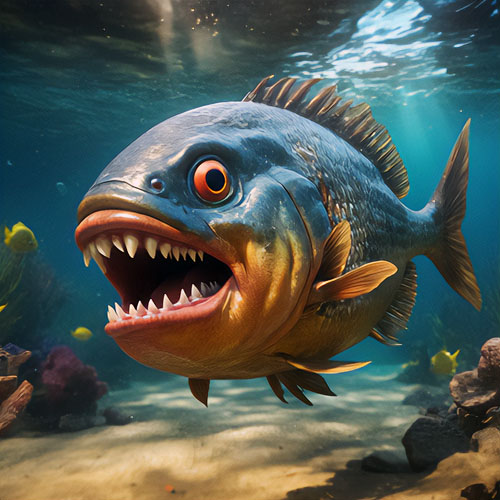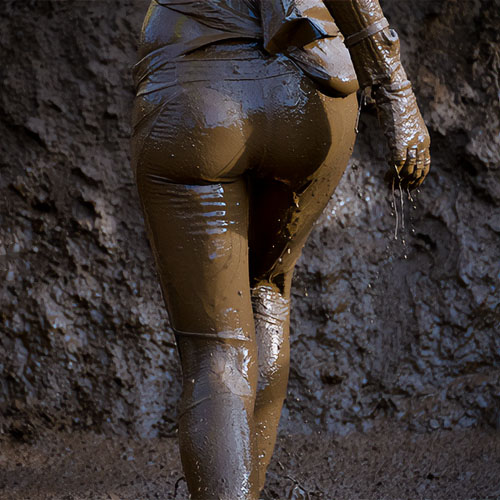Why is former gold medalist Kurt Angle attempting a comeback to Olympic wrestling at the age of 43, after four neck injuries and 16 years away from the sport?
Driven (with Kurt Angle)
Inside the wrestling room of a gym on Main Street in Carnegie, Pennsylvania, a quiet hamlet outside Pittsburgh, Kurt Angle is stretching his neck. In 1996, he won the Olympic gold medal in heavyweight freestyle wrestling while recovering from two fractured cervical vertebrae and two herniated disks. He’s broken his neck three more times since then. He insists it’s fine. At the moment, he’s more concerned about his hamstring. “It tore, partially. I wrestled the pay-per-view with my leg taped, and it bled so badly the whole back of my leg — the calf, shin, and foot-were black,” he says. But that, too, is apparently fine. “I rehabbed right. Nine days later, I was back on the mats.”
Angle is one of only four wrestlers in history to win the junior nationals (1987), an NCAA individual title (1990, ’92), a world championship (’95), and an Olympic gold medal (’96). But after his triumph in Atlanta in ’96, he did something almost as unusual as his grand slam of championships: Angle entered the world of professional wrestling, where results are often predetermined, and theater outstrips competition. That’s not to say that pro wrestling isn’t physically demanding; it certainly is, and Angle has the beaten-up body to prove it. He walks gingerly and lands on the middle of his foot with each step. When he wakes up, he says, he feels like he’s “90 years old.” So he hits the gym early. “When I get done training, I feel like I’m 30.”
Today, Angle and his sparring partner will beat each other up for 90 minutes, executing clinches, fireman carries, and double-leg takedowns. There’s also an accidental knee to the balls. The session leaves both guys breathing heavily.
“You bring water?” asks Tony, Angle’s go-to guy for sparring when Angle is not on the road with Total Nonstop Action (TNA) Wrestling, or working at his new company, Angle Foods.
“I forgot again,” Angle says, collapsing onto the padded blue mat. “I need you at least one day next week,” he tells Tony. “On the seventh, I’m meeting with a pizza company from Italy. On the eighth, I’m meeting with GNC. But this is the priority. Training first. Everything gets worked around the training.”
Why is training such a high priority for a former gold medalist who has spent the past 14 years as an entertainer/entrepreneur? At 43, with a one-year-old daughter, two kids from a previous marriage, and four neck injuries, Angle is attempting one of the unlikeliest comebacks in Olympics history: He’s trying to qualify for the London 2012 Summer Games. He will compete in the U.S. Olympic qualifying event in Iowa City in April. If he wins the event, he’ll be the U.S. representative in London in the 96-kilogram (211.6-pound) weight class. If he finishes second or third, he’ll go as an alternate.
“When he wakes up, he says, he feels like he’s ‘90 years old.’ ‘[But] when I get done training, I feel like I’m 30’”
Kurt Angle’s workouts leading up to the 1996 Olympics were legendary. He was also one of the best-conditioned performers in professional wrestling. Now, as he embarks on his comeback, he trains 12 times a week with fierce intensity. But he’s not only trying to overcome age and rust: Angle has gone through a rough patch in the past few years. He’s in recovery from a life-threatening addiction to prescription drugs; he’s had repeated run-ins with the law; and to top it off, in 2009 his wife, Karen, left him for TNA cofounder Jeff Jarrett, and the entire episode was used as a wrestling storyline on television.
The Olympics are Angle’s attempt to rewrite his narrative following the public embarrassments. The entire enterprise is obviously far-fetched, and could be solely a PR move, but Angle is one of the all-time greats, and he still has the superhuman drive that pushed him to victory in 1996. “When he sets his mind on something, that’s all that’s going to get his attention until he completes his goal,” says ex-wife Karen Jarrett. “The thing that makes him amazing in his career is his downfall in his personal life.”
But these days, Angle is trying to do a better job of balancing his personal and professional lives. Earlier today, before the sparring session, he spent a relaxing morning with his 25-year-old fiancee, Giovanna Yannotti. “That was the first time we did that in so long,” Angle says. But he also made sure it didn’t interfere with training. “She was like, ‘Can we sit in bed and watch a movie?’ I said, ‘Until 1:30.’”
Kurt Angle is the baby of his family, the youngest of six siblings who grew up in the suburbs of Pittsburgh, where his father worked as a crane operator. Sports were a big deal in the Angle household, and his four older brothers all excelled. It was difficult for Kurt to live up to their reputation, and he often fought with his brother Eric, who was a year older. “I never wanted to hit him, but my brother wouldn’t hesitate to punch me in the face,” Kurt says.
“My brothers didn’t think I was championship material. I had a lot of proving to do.”
Angle found his footing in high school, where he was a football and wrestling star. But when he was 16 years old, his father fell off a crane and was later declared brain-dead. Even though his father had attended all of his sporting events, Angle didn’t cry at the hospital after hearing the news. He wanted to go home for a good night’s sleep before football practice. “It just didn’t register” at first, he says. A week later, he broke down sobbing.
The following year, Angle’s athletic career began to soar. He won a state championship in wrestling, and went on to become a two-time NCAA Division I champion at Clarion University, a school of 7,000 students about 100 miles outside Pittsburgh. After college, Angle won the free-style heavyweight gold medal at the 1995 World Championships. He was the pride of the family, the one Angle boy who’d made it, and he stayed with his mother while preparing for the Olympics. He lived monastically, training a preposterous ten hours a day and speaking with his then-fiancee only twice a week. “I knew what I was doing. I was winning the gold medal,” he says. “I didn’t care about anything else.”
There were obstacles, however. Angle’s coach, Dave Schultz, was murdered in January 1996, and a few months later, Angle broke two vertebrae and herniated two disks in his neck during the Olympic trials. He received Novocain injections during the Olympics and battled through the injuries to achieve his goal. “I wasn’t happy,” he says now. “It was more relief than happiness. It was like, Thank you, Lord, I don’t have to worry about the Olympics anymore.”
Olympic gold launched Angle into instant celebrity. He schmoozed with Gwyneth Paltrow on The Tonight Show and played basketball with Jon Stewart and Ben Stiller at Garry Shandling’s house.
When the hubbub died down he became a local sportscaster, but was comically inept at the gig. Angle briefly considered coaching, but instead ended up contacting the World Wrestling Federation. They had offered him a contract following the Olympics and he’d declined. In 1998, he signed with the WWF and quickly became one of their biggest superstars. “He was a natural,” says WWE Hall of Fame wrestler “Stone Cold” Steve Austin. “Everything he did looked good. He was able to chain wrestle, he understood the psychology of it, and he cut great promos. The guy was the fastest learner I’d ever seen.”
In time, Angle “won” championship belts, headlined WrestleMania, and produced the most entertaining and athletic matches on the card. “Guys who had been wrestling for years were saying he’s the best guy they’ve ever been in the ring with,” says Bryan Alvarez, editor of the wrestling newsletter Figure Four Weekly. “He’s one of the best of all time.”
As dubious as that distinction might be for wrestling purists, it gave Angle’s life a second act and provided him with a steady and substantial income. But no sooner had he established his new life than it began to fall apart. He injured his neck three times in a 14-month period, and even though he’d never done drugs before and wasn’t a drinker, he became addicted to painkillers after the injuries. He got chummy with doctors and became junkie-smart, scoring from different pharmacies. It got to a point where he’d take 65 pills a day, including 18 upon waking to quell the shakes. “I had some scares,” he says. “There were a couple of times where my ex almost had to call the ambulance because I wasn’t waking up.”
“There were more than a few close calls,” says Karen Jarrett of that time. Professional wrestlers have a high mortality rate, and Angle appeared close to increasing it. “Every time he went on the road,” Jarrett recalls, “I was afraid I would get that phone call.” Angle eventually quit cold turkey. These days, he says, his only vices are tobacco pouches. He also takes a non-narcotic medication to curtail the “buzzing in my neck.”
Angle sits in a McDonald’s near the Pittsburgh airport. He’s wearing a black T-shirt, olive-colored shorts, grungy sneakers, and a black wool cap inscribed with WAR MACHINE. His eyes are a clear, almost eerie shade of blue, and he doesn’t make much eye contact while recounting his lost days.
“Angel is one of only four wrestlers ever to win the junior nationals, and NCAA title, a world championship, and an Olympic gold medal.
“I was disgusted with myself,” he says. Addiction, he says, runs in his family. His father was a “functioning alcoholic,” and his sister Le’Anne died of a heroin overdose in 2003. Angle was suspended in June 2006 for having steroids in his system after his prescription expired. (A 2007 Sports Illustrated article on Applied Pharmacy Services stated that Angle received Trenbolone, a steroid used on livestock. Angle claims he was prescribed steroids for his various injuries.) He was soon released by the WWE. It’s been reported that the WWE was concerned about his painkiller addiction and offered rehab, which Angle refused. Angle denies it was offered; a WWE spokesman says the company can’t comment because of Health Information Privacy (HIPAA) rules.
Instead of taking time off after his release, Angle signed with TNA. “He was a personal and physical wreck at the time,” says Dixie Carter, president of TNA. “I just had to get to a point where I was comfortable with what he was saying. Once I felt that, I was good to go.”
Angle legitimized the upstart company, immediately headlining pay-per-views. He also got his wife a job as an on-camera personality. However, working together put more strain on their marriage, and she filed for divorce. It was later revealed that she was dating TNA’s cofounder, the wrestler Jeff Jarrett. “I wasn’t as mad at Karen,” Angle says. “I was more upset with Jeff.” Jarrett and Karen went on leave. Angle went into a tailspin.
In August 2009, Angle was arrested for harassment after his then-girlfriend, the former TNA wrestler Trenesha Biggers, claimed he was stalking her. (He was also arrested for DUI in March 2011 in North Dakota and in September 2011 in Virginia; the latter DUI charge was dropped.) “She was squatting in my house,” Angle says. “She wanted me to give her money to leave. Three days later, she went to the police and told them I beat her up.” All charges were dropped, but the case damaged his reputation. “People thought I did some of that stuff,” he says. “It made me realize that you can’t be angry. I was done being mad at Karen and Jeff.”
Within months, Karen and Jarrett were back at TNA, and while Jarrett and Angle feuded on television, they’ve become friends outside the ring. “We have a great relationship, and [fiancée] Giovanna and Karen are buddies, too,” Jeff Jarrett says. Jarrett was preparing to drive from Tennessee to Pittsburgh with Karen and the kids (Jarrett has three children from his late wife) for Angle’s birthday. “It’s all good. It’s like a reality show without the cameras.”
Kurt Angle proposed to Giovanna outside a jewelry store in Pittsburgh. They plan to marry sometime in the spring, but there’ll be no honeymoon because of Angle’s training. “I feel bad for my fiancée because sometimes I’m so consumed with what I do,” he says. “A girl like Giovanna deserves to be put on a pedestal.”
Although he’s signed long-term with TNA. Angle doesn’t expect to wrestle into his fifties and sixties like Hulk Hogan and Ric Flair did. He says he’s invested wisely and could retire today. Angle Foods, he explains, is his future. He’s also dabbled in acting, snagging a role in last year’s well-received Warrior, and he recently auditioned for a part in a Tom Cruise film. But that’s not enough to redeem his image.
“The Olympics are something I have to do,” Angle says, stressing his gratitude to TNA for the time off. “It’s my redemption. It’s to show I’m not what people think I am.”
He also needs to heed his competitive streak. “I’m still not satisfied with what I’ve accomplished,” Angle says. “It’s a hard thing to say. I’m considered one of the greatest pro wrestlers, too, but that’s still not good enough.”
Even a positive result in Iowa City next month might not be enough, says Angle. “I wouldn’t put it past myself to try out for the next Olympics, too.”
In case you are curious, Kurt Angle and Giovanna are still married. You may also buy yourself a Cameo by Kurt Angle or even pick up some Kurt Angle gear. Then of course you can reach out to our office favorite YouTube channel. … Basically, you remain free to develop your own Angle. (Sometimes we just cannot help ourselves. It’s a thing.)
























